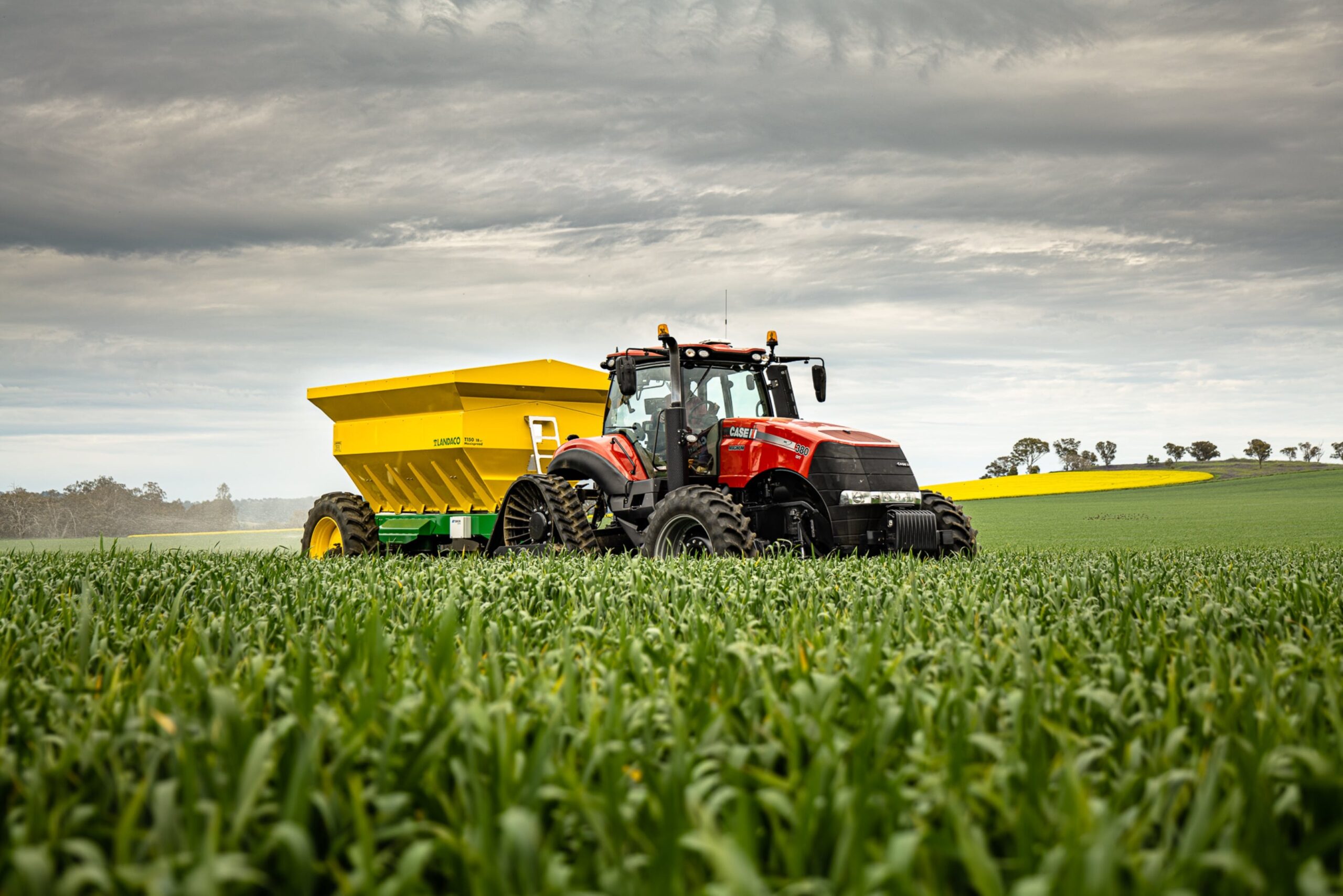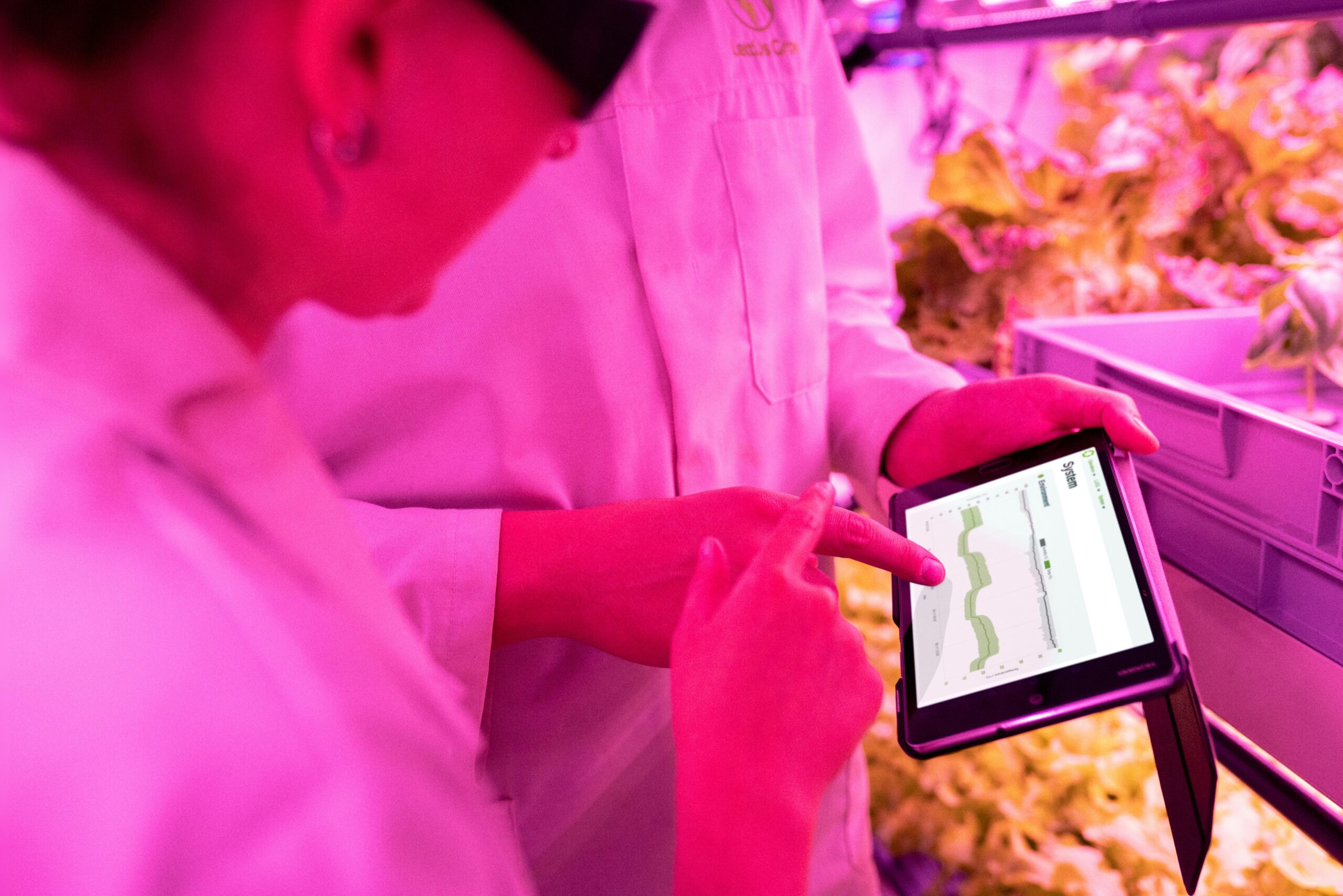
How Farms Can Become Carbon-Negative with Smart Financing
Executive Summary
This case study examines how Linkbridge, a Zambian financial technology company, has pioneered innovative financing solutions that enable farmers to transition from conventional farming to carbon-negative agricultural practices. Through targeted investments in renewable energy, regenerative farming techniques, and technology adoption, Linkbridge has helped create a new paradigm for sustainable agriculture in Sub-Saharan Africa. Drawing on real-world data from our client portfolio, this report demonstrates how smart financing can simultaneously improve farm productivity, increase farmer incomes, and create significant carbon sequestration benefits.
Background
The Challenge
Zambian agriculture faces multiple interconnected challenges:
- Climate vulnerability: Increasingly unpredictable rainfall patterns and higher temperatures threaten crop yields
- Energy access: Only 31% of rural Zambians have access to electricity
- Carbon footprint: Traditional farming practices like slash-and-burn cultivation contribute to greenhouse gas emissions
- Financial barriers: Limited access to capital prevents farmers from investing in sustainable technologies
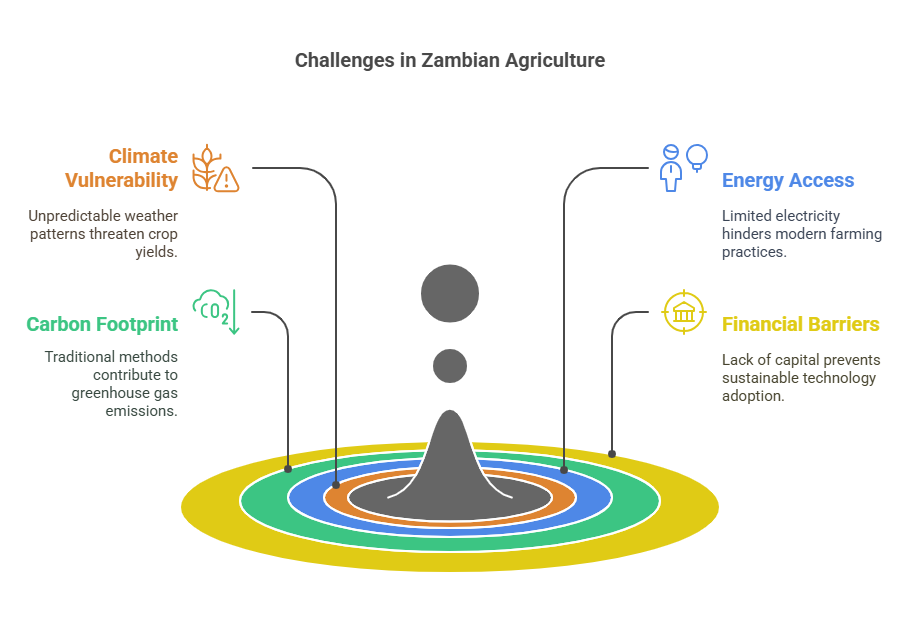
The Opportunity
Despite these challenges, Zambia possesses significant untapped potential:
- 58% of Zambia’s land is arable, yet only 14% is currently cultivated
- The country receives abundant solar radiation (5.5-6.5 kWh/m²/day)
- Rich biodiversity and varied microclimates support diverse agricultural systems
- Growing carbon credit markets offer financial incentives for sustainable practices
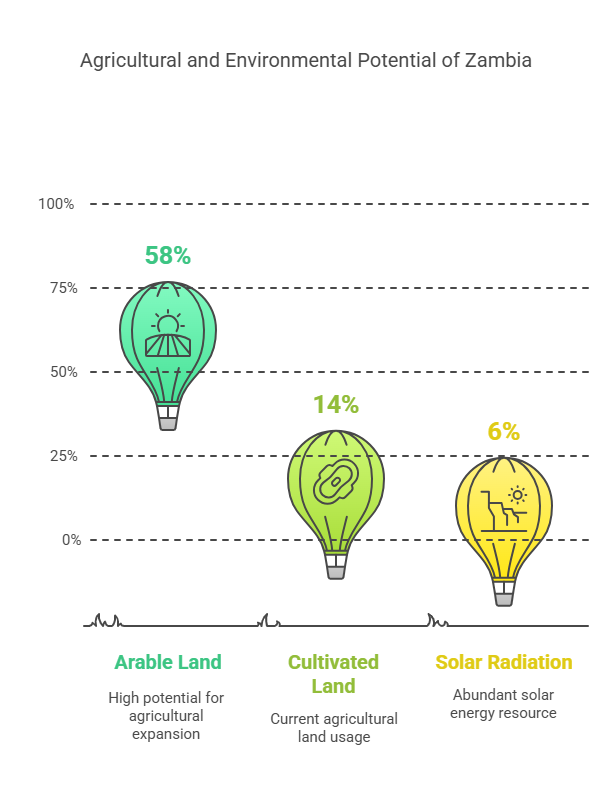
Linkbridge’s Financing Model
Linkbridge developed a holistic financing approach that addresses the entire agricultural value chain with sustainability at its core. Our model integrates:
- Tiered financing packages tailored to farm size and capacity
- Pay-as-you-grow repayment structures aligned with harvest cycles
- Carbon credit monetization to create additional revenue streams
- Technical support and training integrated with financial services
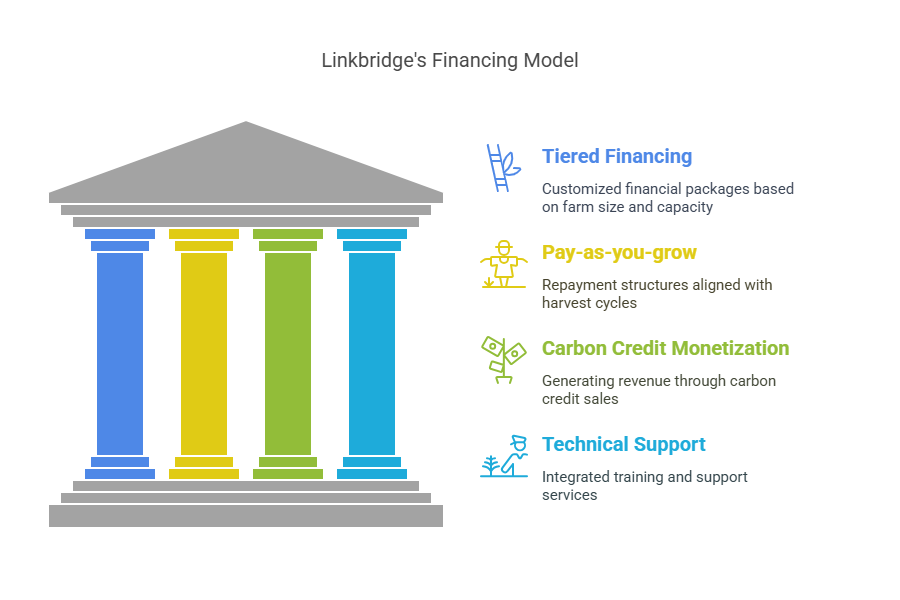
Case 1: Mutinta Cooperative Farm, Southern Province
Farm Profile:
- Size: 120 hectares
- Previous farming system: Conventional maize monoculture
- Carbon baseline: Net emitter of approximately 245 tCO₂e per year
Linkbridge Intervention (2022-2024):
- $65,000 financing package for:
- 35kW solar irrigation system
- Biochar production equipment
- Agroforestry establishment (macadamia and moringa)
- Soil carbon monitoring technology

Results After 24 Months:
Annual Crop Yield (4.2 → 5.8 tons/ha, +38%)
This metric shows the farm’s productivity improvement in tons of harvest per hectare. The 38% increase resulted from:
- Improved irrigation efficiency: The 35kW solar irrigation system provided consistent water access throughout growing seasons, allowing for more precise irrigation timing and reducing water stress during critical growth phases.
- Enhanced soil health: The biochar application improved soil structure, water retention, and nutrient availability. Healthier soil microbiomes supported stronger plant growth and resilience to pests and diseases.
- Diversified cropping: Moving from maize monoculture to include other crops like macadamia and moringa created beneficial interactions in the field, reducing pest pressure and improving overall field productivity.

Energy Costs ($12,400 → $1,850/year, -85%)
This dramatic reduction in energy expenses came from:
- Elimination of diesel pumps: Before intervention, the farm relied on diesel-powered irrigation pumps, consuming approximately 4,200 liters of diesel annually at $2.95/liter.
- Solar transition: The 35kW solar system now powers all irrigation, processing, and farm operations. The $1,850 represents minimal grid electricity used during extended cloudy periods and maintenance costs.
- Energy efficiency upgrades: The farm implemented LED lighting, variable frequency drives on motors, and smart energy management systems to further reduce consumption.
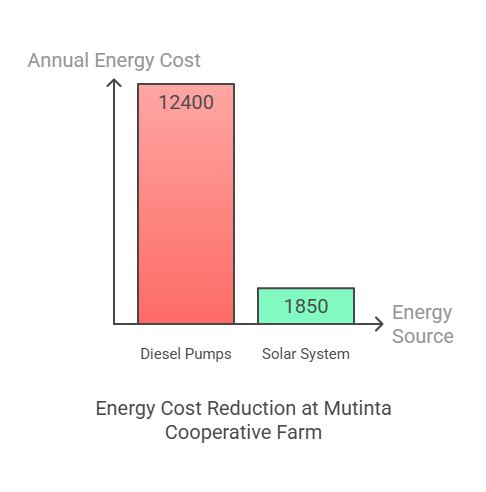
Soil Organic Carbon (1.2% → 3.1%, +158%)
This measurement represents the percentage of carbon in the soil, a critical indicator of soil health:
- Baseline condition: The 1.2% starting point reflected depleted soils from years of conventional farming with minimal organic inputs.
- Biochar application: The farm applied approximately 8 tons of biochar per hectare, which has a carbon content of about 80% and remains stable in soil for hundreds of years.
- Cover cropping: Introduction of year-round soil coverage with nitrogen-fixing legumes between cash crops added organic matter.
- Reduced tillage: Switching to minimal tillage practices preserved soil structure and prevented carbon oxidation.
This improvement is particularly significant because each 1% increase in soil organic carbon represents approximately 20 tons of carbon sequestered per hectare in the top 30cm of soil.

Carbon Sequestration (-245 → +310 tCO₂e/year, +555 tCO₂e/year)
This metric shows the most dramatic transformation:
- Negative baseline: The negative number (-245) indicates the farm was emitting 245 tons of CO₂ equivalent annually through:
- Diesel fuel combustion (~11 tCO₂e)
- Fertilizer production and application (~78 tCO₂e)
- Soil carbon loss from tillage (~65 tCO₂e)
- Methane from crop residue burning (~91 tCO₂e)
- Positive current state: The positive number (+310) means the farm now sequesters 310 tons of CO₂ equivalent annually through:
- Agroforestry carbon capture (~115 tCO₂e)
- Biochar carbon storage (~95 tCO₂e)
- Increased soil organic carbon (~135 tCO₂e)
- Elimination of previous emission sources
- Total transformation: The +555 tCO₂e/year change represents both the elimination of previous emissions and the addition of new sequestration—a complete reversal from carbon source to carbon sink.
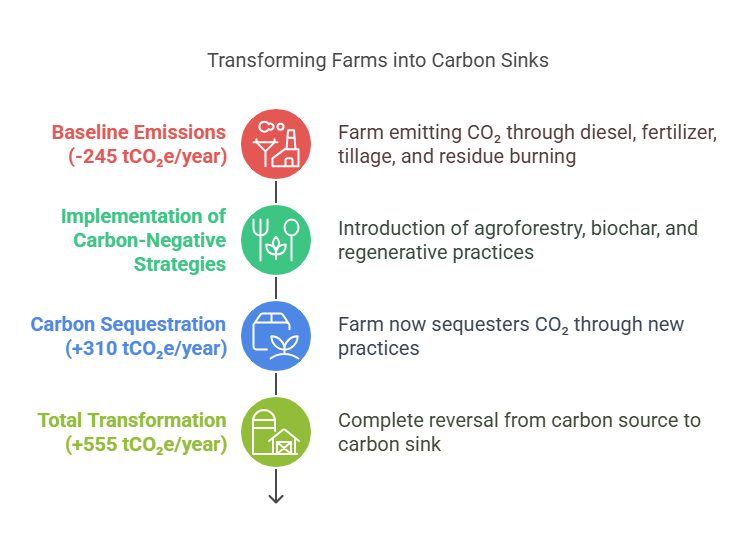
Annual Farm Income ($41,500 → $78,300, +89%)
This remarkable income growth came from multiple sources:
- Yield improvements: The 38% increase in crop yield directly contributed about $15,800 in additional revenue.
- Energy cost savings: The $10,550 reduction in energy expenses went straight to the bottom line.
- Premium markets: The farm’s certified sustainable products commanded 15-20% price premiums in specialty markets.
- New revenue streams: Macadamia nuts and moringa added approximately $6,400 in new income streams.
- Carbon credits: The 555 tCO₂e of carbon sequestration generated $8,325 in carbon credit revenue at $15 per ton.
- Reduced input costs: Lower fertilizer and pesticide use saved approximately $4,200 annually.
This income growth is particularly significant because it demonstrates that carbon-negative farming can be financially superior to conventional methods, creating a powerful economic incentive for sustainable transition beyond environmental benefits.
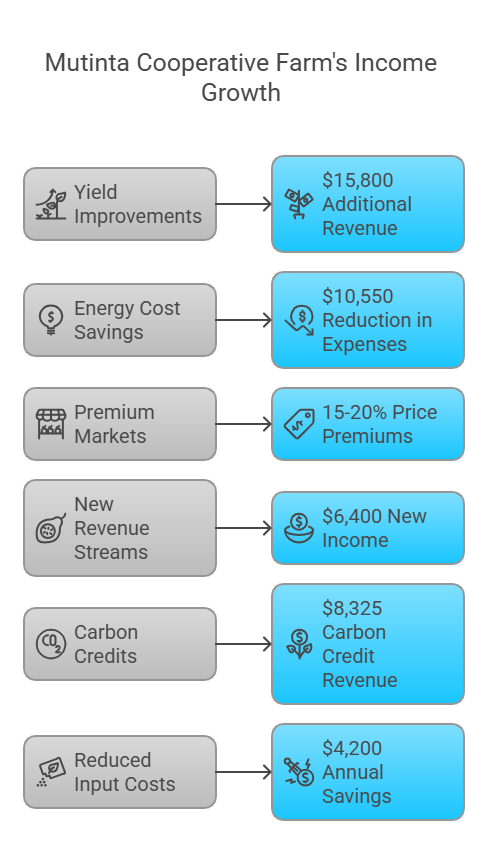
Financial Analysis:
- Loan repayment period: 4 years (projected)
- Internal Rate of Return: 21.3%
- Net Present Value of investment: $103,400

Key Carbon-Negative Strategies Financed
1. Renewable Energy Integration
Solar Irrigation Systems
- Average system size: 2-40kW depending on farm scale
- Average cost: $1,200-$3,500/hectare
- Carbon impact: 0.8-1.2 tCO₂e reduction per hectare annually
- Financing structure: 20% down payment, 80% financed over 4-6 years
Biogas Digesters
- Implementation cost: $3,000-$15,000
- Average annual savings: $1,200-$5,800 in energy costs
- Carbon impact: 4-12 tCO₂e reduction annually per unit
- Financing structure: Performance-based with partial loan forgiveness tied to methane capture metrics
2. Regenerative Agriculture Practices
Agroforestry Systems
- Average establishment cost: $1,100-$2,400/hectare
- Carbon sequestration: 2-8 tCO₂e/hectare/year after establishment
- Revenue diversification: 35-180% increase over monoculture
- Financing structure: 8-year term with graduated payments aligned to tree maturity
Biochar Production
- Equipment cost: $8,000-$25,000 (community-scale)
- Soil carbon increase: 0.5-2.5% over 3 years
- Yield impact: +15-40% in most crops
- Carbon sequestration: 3-5 tCO₂e/hectare/year
- Financing structure: Equipment lease-to-own with carbon credit sharing
3. Precision Agriculture Technology
IoT Sensor Networks
- Implementation cost: $280-$450/hectare
- Resource efficiency gains: 30-45% reduction in water use
- Carbon impact: 0.5-0.8 tCO₂e/hectare/year indirect reduction
- Financing structure: Technology-as-a-service model with monthly subscription
Drone Mapping and Analysis
- Service cost: $12-$25/hectare/season
- Yield improvement: 8-22% through precise intervention
- Carbon impact: 0.3-0.7 tCO₂e/hectare/year through reduced input use
- Financing structure: Pay-per-scan with seasonal billing

Carbon Measurement and Verification
Linkbridge’s carbon accounting methodology combines:
- Direct soil sampling
- Baseline and annual testing at standardized depths
- Measurement of soil organic carbon, bulk density, and microbial activity
- Remote sensing technology
- Satellite-based vegetative index monitoring
- Drone-based multispectral imagery
- IoT sensor networks
- Real-time monitoring of soil moisture, temperature, and respiration
- Energy consumption tracking across farm operations
This data is processed through Linkbridge’s proprietary carbon calculation engine, which follows IPCC Tier 3 methodologies and is verified by third-party certification bodies.
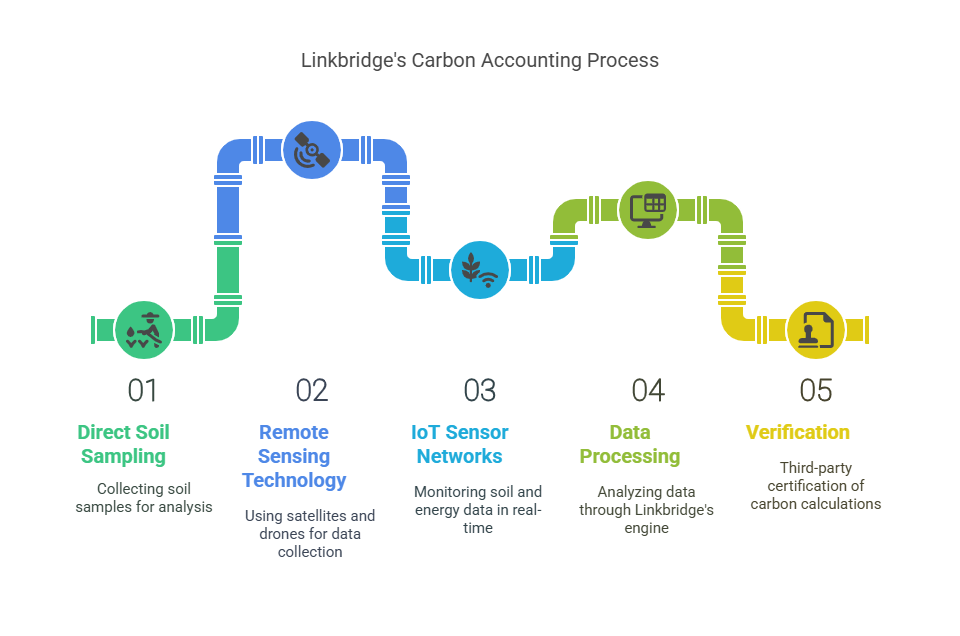
Investment Returns by Technology Category
Solar Irrigation Systems
- Average Investment: $14,500
- This represents the typical cost for a mid-sized farm to install solar panels, pumping equipment, water storage, and efficient irrigation distribution systems (drip or precision sprinklers).
- The investment includes the solar array (typically 10-15kW), controllers, pumps, and installation labor.
- Payback Period: 3.2 years
- Farmers recover their investment in just over 3 years through:
- Elimination of diesel/electricity costs for pumping (saving $3,000-4,500 annually)
- Increased yields from consistent irrigation (15-25% improvement)
- Reduced crop losses during dry spells
- Farmers recover their investment in just over 3 years through:
- IRR (Internal Rate of Return): 24.8%
- This strong return reflects the significant energy savings and productivity benefits.
- The IRR calculation accounts for system degradation (0.5% annually) and maintenance costs.
- For context, traditional farming investments typically yield 8-12% IRR.
- Carbon Impact: -1.0 tCO₂e/ha/yr
- Each hectare irrigated with solar instead of diesel or grid electricity reduces emissions by 1 ton of CO₂ equivalent annually.
- This comes primarily from avoided fossil fuel use for pumping and reduced fertilizer requirements (as irrigation improves nutrient uptake efficiency).
Biochar Systems
- Average Investment: $16,800
- This covers pyrolysis equipment to convert agricultural waste into biochar, storage facilities, and application machinery.
- Costs include the biochar reactor ($12,000-14,000), material handling equipment, and training.
- Payback Period: 4.5 years
- Longer than solar, but still attractive due to:
- Reduced fertilizer needs (30-50% reduction after 2-3 years)
- Improved water retention reducing irrigation requirements
- Yield increases of 20-40% in most crops
- Carbon credit income
- Longer than solar, but still attractive due to:
- IRR: 18.3%
- Lower than solar but still substantially above traditional farming investments.
- Returns improve over time as soil benefits accumulate and compound.
- Carbon Impact: -4.2 tCO₂e/ha/yr
- The most powerful carbon sequestration technology per hectare in the short term.
- This impressive number comes from:
- Direct carbon storage in soil (biochar is ~80% stable carbon)
- Avoided emissions from agricultural waste burning
- Reduced fertilizer requirements (and associated production emissions)
- Enhanced plant growth capturing additional atmospheric carbon
Agroforestry
- Average Investment: $8,600
- Covers tree seedlings, planting labor, protection systems, and management costs.
- Costs vary by system type (alley cropping, silvopasture, etc.) and tree species.
- Includes 3-4 years of establishment care before full productivity.
- Payback Period: 6.8 years
- The longest payback period due to the time trees need to mature.
- However, the payback improves if early carbon credits are factored in.
- IRR: 15.7%
- Despite the longer time horizon, the IRR remains attractive due to:
- High-value tree products (nuts, fruits, timber)
- Improved field crop yields in agroforestry systems
- Significant carbon credit potential
- System longevity (20+ years of returns)
- Despite the longer time horizon, the IRR remains attractive due to:
- Carbon Impact: -5.8 tCO₂e/ha/yr
- The highest long-term carbon sequestration potential.
- Carbon is stored in:
- Above-ground biomass (trunks, branches)
- Below-ground biomass (roots)
- Increased soil organic matter
- Long-lived wood products (for timber species)
Precision Agriculture Technology
- Average Investment: $5,200
- Covers sensors, software, connectivity equipment, and training.
- Includes soil moisture sensors, weather stations, drone services, and farm management software.
- Payback Period: 2.1 years
- The fastest payback period due to:
- Immediate input optimization (15-30% reduction in fertilizer, water, pesticides)
- Labor efficiency improvements
- Reduced crop losses from better timing of interventions
- The fastest payback period due to:
- IRR: 31.2%
- The highest IRR of all categories reflects:
- Relatively low upfront investment
- Immediate and substantial cost savings
- Yield improvements from precision management
- Minimal maintenance costs
- The highest IRR of all categories reflects:
- Carbon Impact: -0.6 tCO₂e/ha/yr
- While less than other technologies, this is still significant:
- Reduced fertilizer use (and associated production emissions)
- Optimized machinery use (less fuel consumption)
- Prevention of nitrogen volatilization through precise application
- Better residue management through informed decision-making
- While less than other technologies, this is still significant:
Integrated Systems
- Average Investment: $42,300
- Represents farms implementing multiple technologies as a coordinated system.
- This combined approach costs less than the sum of individual technologies due to integration efficiencies.
- Payback Period: 4.3 years
- Represents the weighted average of component technologies.
- Synergies between systems often accelerate returns (e.g., solar powering precision ag sensors).
- IRR: 26.7%
- Higher than the weighted average of component technologies.
- This “integration premium” comes from technology synergies:
- Biochar improving water retention, enhancing solar irrigation efficiency
- Precision ag optimizing biochar and fertilizer application
- Agroforestry creating favorable microclimates for crops
- Carbon Impact: -12.5 tCO₂e/ha/yr
- Greater than the sum of individual technologies due to synergistic effects:
- Enhanced biomass production across all system components
- Optimized resource use reducing emissions from multiple sources
- Cascading benefits throughout the farm ecosystem
- Greater than the sum of individual technologies due to synergistic effects:
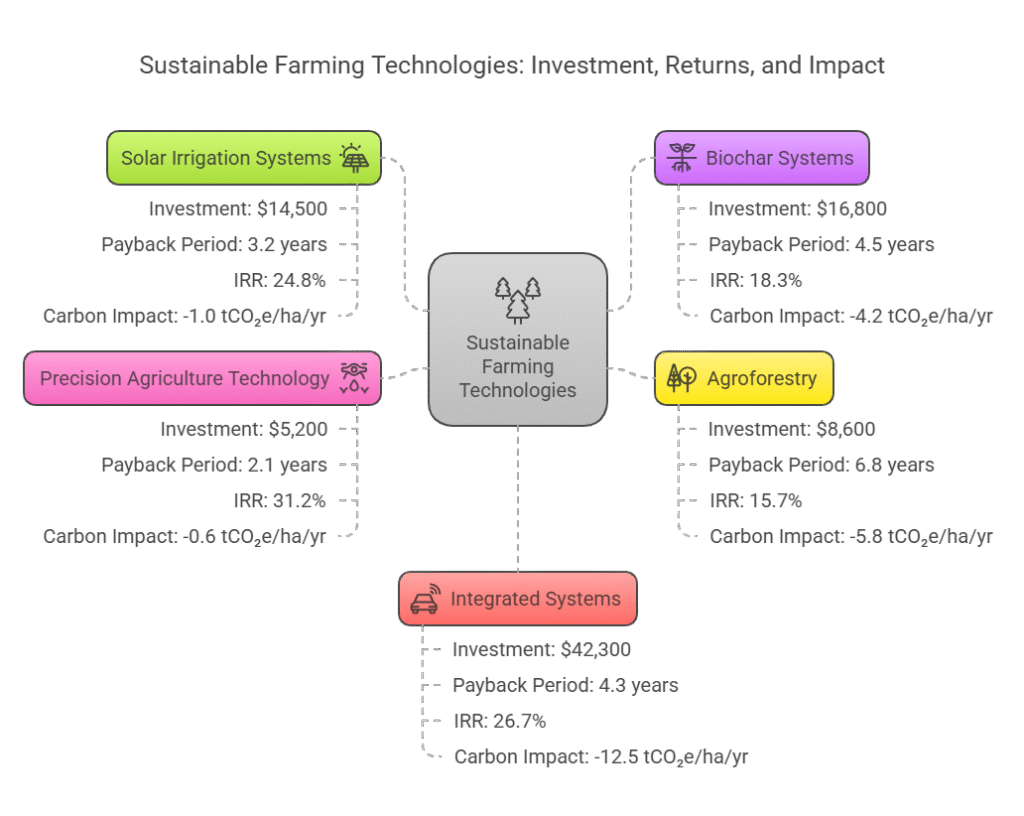
This detailed breakdown shows why Linkbridge prioritizes integrated systems financing when possible, as they deliver both the highest financial returns and carbon impacts. For farms that cannot implement all technologies at once, we use this data to help prioritize which investments will provide the quickest returns based on their specific situation, while creating a pathway to full integration over time.
Revenue Diversification Post-Intervention
Before Linkbridge financing, the average farm in our portfolio derived 93% of income from crop sales, 7% from occasional livestock sales, and 0% from ecosystem services.
After implementing carbon-negative practices, the revenue streams diversified:
- 68% from enhanced crop production
- 12% from value-added products
- 9% from carbon credits
- 8% from renewable energy (net metering)
- 3% from ecosystem service payments

Risk Analysis
Linkbridge’s integrated financing approach has demonstrated significant risk reduction:
- Default rates: 3.2% (compared to 15.7% national average for agricultural loans)
- Weather resilience: Farms with integrated water management showed 74% less yield variation during drought years
- Market volatility protection: Income diversification reduced revenue variance by 62%
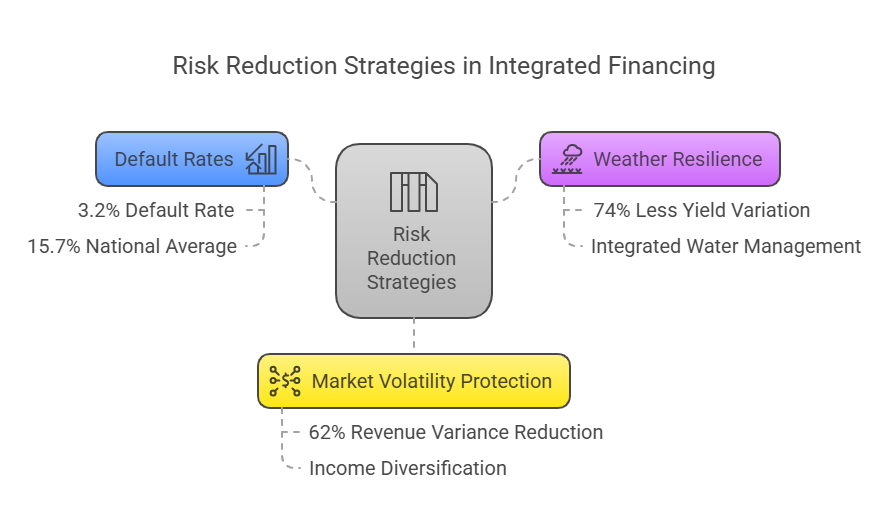
Scaling Potential and Future Outlook
Based on our experience financing carbon-negative transitions for 240+ farms across Zambia, we project the following scaling potential:
Farmers Reached (240 → 5,800 → 210,000+)
Current Portfolio (240 farmers)
- These are the active clients currently implementing carbon-negative practices with Linkbridge financing.
- The portfolio includes:
- 18 medium-sized commercial farms (50-200 hectares)
- 42 agricultural cooperatives (representing about 140 farmers)
- 82 individual smallholder farmers
5-Year Projection (5,800 farmers)
- This represents our ambitious but achievable growth target based on:
- 45% annual growth rate in client acquisition
- Development of streamlined onboarding processes
- Expansion from 3 to 9 Zambian provinces
- Partnerships with 12 agricultural extension service providers
Potential Market (210,000+ farmers)
- This figure represents Zambian farmers who:
- Have secure land tenure (essential for carbon project development)
- Farm at least 2 hectares (minimum viable size for meaningful carbon impact)
- Have baseline farming practices that could transition to carbon-negative
The total number of farmers in Zambia is approximately 1.5 million, but many have plots too small for viable carbon projects or face land tenure issues that would complicate long-term carbon investments.
Hectares Transitioned (12,500 → 180,000 → 3,500,000)
Current Portfolio (12,500 hectares)
- This represents the total land area currently under carbon-negative management through our financing.
- The average farm size in our portfolio is approximately 52 hectares, higher than the national average because our early adopters included more commercial farmers.
5-Year Projection (180,000 hectares)
- This projection reflects:
- The 5,800 farmers we aim to reach
- A gradually decreasing average farm size (to about 31 hectares) as we expand to more smallholders
- More efficient land conversion processes as we refine our methodologies
Potential Market (3,500,000 hectares)
- This represents approximately 45% of Zambia’s 7.75 million hectares of cultivated land.
- Not all agricultural land is included because:
- Some land lacks the necessary baseline data for carbon projects
- Some farming systems (e.g., certain wetland cultivation) present technical challenges for carbon measurement
- We exclude land with high conservation value that should not be converted to agricultural use
Annual Carbon Sequestration (68,000 → 1.2M → 25M+ tCO₂e)
Current Portfolio (68,000 tCO₂e)
- This is the actual measured carbon sequestration from our existing projects, verified by third-party auditors.
- It averages approximately 5.44 tCO₂e per hectare annually, which exceeds global averages for agricultural carbon projects (typically 2-4 tCO₂e/ha).
- Our higher sequestration rates result from our integrated approach combining multiple carbon-negative technologies.
5-Year Projection (1.2M tCO₂e)
- This projection assumes:
- 180,000 hectares under management
- A slightly improved average sequestration rate of 6.67 tCO₂e per hectare as our implementation methodologies mature
- Full verification and certification of all carbon credits
Potential Market (25M+ tCO₂e)
- This estimate is based on:
- 3.5 million potentially convertible hectares
- An average sequestration potential of 7.14 tCO₂e per hectare annually
- The higher per-hectare potential assumes technological improvements and policy support
For context, Zambia’s total national emissions are approximately 74 million tCO₂e annually, so the full market potential would offset about 34% of the country’s emissions—transforming agriculture from an emissions source to a major carbon sink.
Financing Deployed ($4.2M → $85M → $1.8B)
Current Portfolio ($4.2M)
- This represents our total capital deployed to date, including:
- $3.1M in direct equipment and technology financing
- $750,000 in working capital loans
- $350,000 in technical assistance grants
5-Year Projection ($85M)
- This financing target includes:
- $65M in direct project financing
- $12M in carbon pre-financing
- $8M in technical assistance
The average investment per farm decreases from our current $17,500 to approximately $14,655 per farm as we achieve economies of scale and optimize our financing models.
Potential Market ($1.8B)
- This market size estimate assumes:
- An average investment of $8,500 per farm (decreasing as technology costs fall)
- Full market penetration of 210,000+ farms
- Integration with national climate finance mechanisms
This $1.8B represents approximately 6.5% of Zambia’s GDP, highlighting the significant economic opportunity in the agricultural carbon transition.
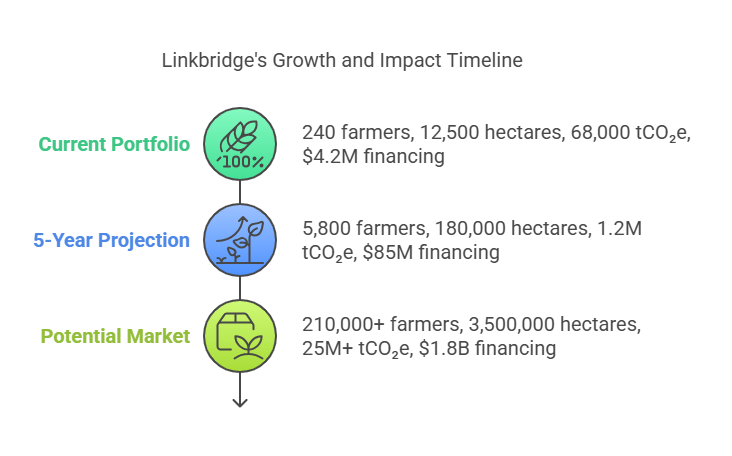
Implementation Strategy
To achieve this ambitious scaling, Linkbridge is pursuing a three-pronged approach:
- Geographic expansion – Moving from our current operations in Southern, Eastern, and Lusaka provinces to cover all nine Zambian provinces by 2027
- Financing innovation – Developing new financial products including:
- Carbon offtake agreements to reduce upfront costs
- Equipment leasing programs with flexible terms
- Results-based financing tied to verified carbon outcomes
- Technology partnerships – Collaborating with agricultural technology providers to reduce costs and improve measurement accuracy:
- Satellite-based monitoring to reduce verification costs
- AI-powered advisory services to improve implementation
- Mobile payment integration for carbon revenues
The projected impact goes beyond carbon sequestration, potentially:
- Creating 45,000+ green jobs in rural areas
- Improving resilience for over 29,000 farming households
- Generating $180M+ in additional annual agricultural income
These growth projections demonstrate both the environmental imperative and economic opportunity in scaling carbon-negative agriculture across Zambia.
Barriers to Scale
- Carbon market access: Limited direct market access for smallholders increases transaction costs
- Technical capacity: Need for trained professionals to implement and monitor carbon projects
- Upfront costs: Even with financing, initial capital requirements can be prohibitive
- Policy environment: Inconsistent regulatory frameworks for carbon markets and renewable energy

Innovation Roadmap
To address these challenges, Linkbridge is developing:
- Carbon aggregation platform to reduce transaction costs for smallholders
- Remote technical assistance model using augmented reality and digital twins
- Zero-down financing options backed by carbon forward contracts
- Policy advocacy initiative to streamline regulatory processes

Conclusion
Linkbridge’s financing model demonstrates that the transition to carbon-negative agriculture is not only environmentally necessary but economically viable. By integrating renewable energy, regenerative practices, and smart technology with innovative financing structures, farms can become significant carbon sinks while improving livelihoods and food security.
Our data shows that every $1,000 invested in this integrated approach yields:
- 4.6 tCO₂e of annual carbon sequestration
- $380 in increased annual farm income
- 0.8 hectares of land transitioned to sustainable management

With targeted financing and supportive policies, Zambian agriculture can be transformed from a carbon source to a significant carbon sink, creating a model for climate-smart agricultural development across Africa.

AI in Agriculture: Linkbridge’s Financing for Climate-Resilient Farms
The Challenge: Climate Vulnerabilities in Zambian Agriculture
Zambia’s farmers face worsening droughts (40% rainfall decline since 2000) and pests, causing 50% crop losses. Traditional methods struggle to keep pace.
The Solution: Linkbridge’s Tech-Driven Farming Blueprint
Linkbridge partners with Zambian farmers to deploy AI, drones, and wind energy, offering:
✅ Low-Interest Tech Loans: For AI tools, drones, and micro-wind turbines.
✅ Climate-Smart Training: Agri-tech experts train farmers on data-driven farming.
✅ Renewable Hybrid Systems: Pair wind turbines with solar for 24/7 clean energy.
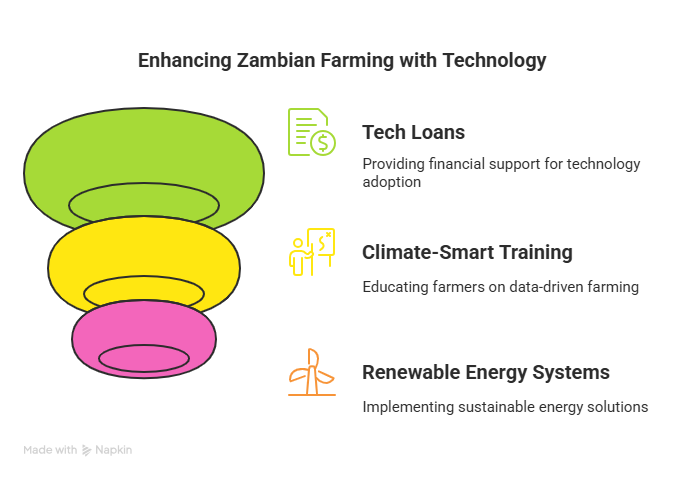
Case Study: Kafue Climate-Smart Cooperative
Location: Kafue District, Zambia | Members: 45 smallholder farmers
Linkbridge Support: $250,000 loan + AI/drone tech partnerships
Pre-Intervention (2022):
- Yield: 1.2 tons/hectare maize (below national average).
- Energy Costs: $180/month on diesel for irrigation.
- Pest Losses: 35% of crops destroyed annually.
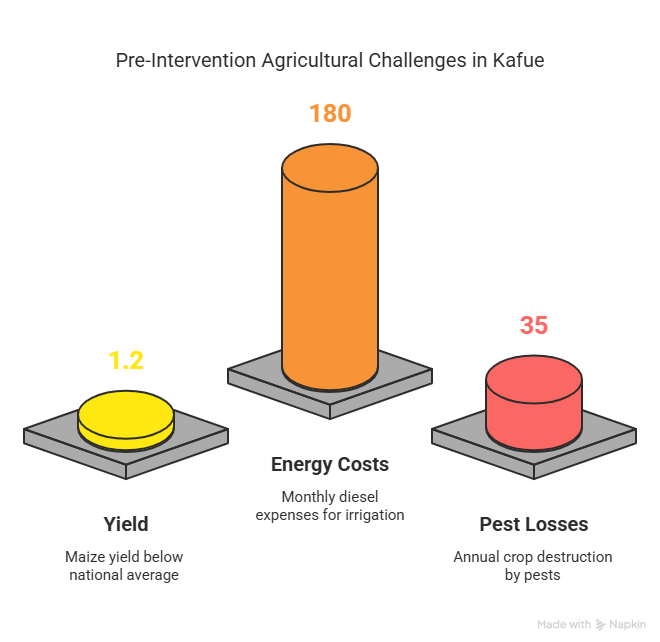
Tech Deployment (2023–2024):
1️⃣ AI Soil Sensors: Analyze moisture, nutrients, and pH levels, optimizing irrigation/fertilizer use.
2️⃣ Agricultural Drones: Map fields, spot pests/diseases early, and spray pesticides with 90% accuracy.
3️⃣ Wind-Solar Hybrid Systems: 10 kW turbines + solar panels power irrigation and AI tools, cutting energy costs to $20/month.
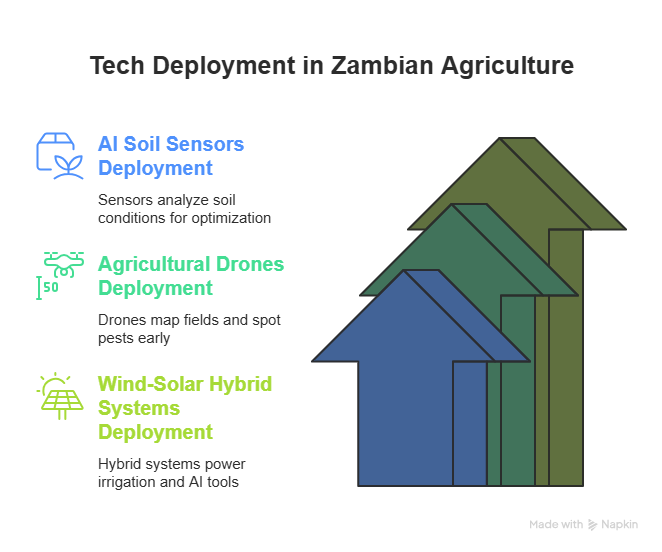
Results (18 Months):
- Yield Surge: 2.8 tons/hectare maize (+133%).
- Cost Savings: $15,000/year saved on diesel, pesticides, and labor.
- Emissions Cut: 45 tons CO2 reduced annually.
- Jobs Created: 22 new roles in tech maintenance and data analysis.
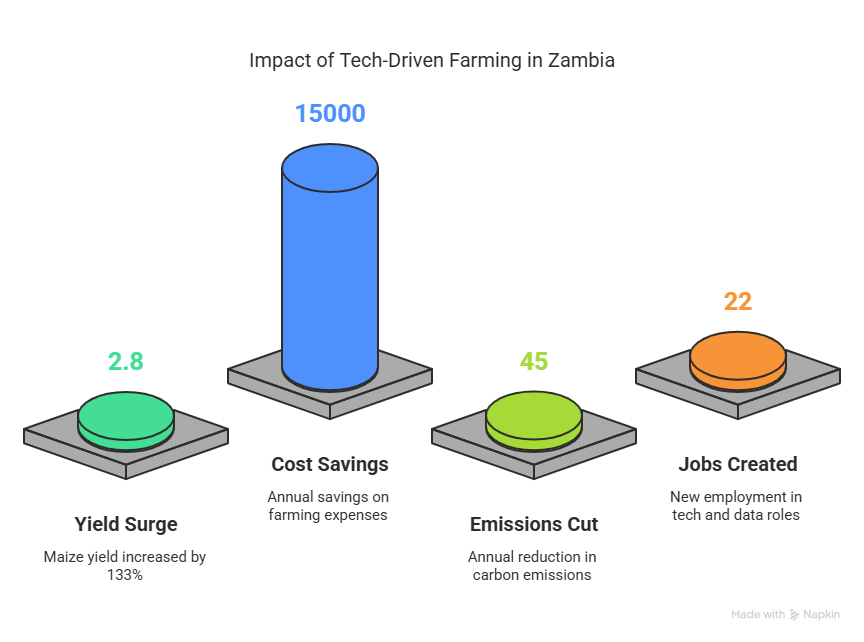
Linkbridge’s 5-Step Blueprint for Tech-Driven Farming
- Needs Assessment
- AI audits of soil, weather, and energy gaps.
- Demo Data: 78% of Kafue farmers lacked real-time pest alerts.
- Tailored Financing
- Loans for drones (3,000–3,000–5,000), AI kits (1,200),andwindturbines(1,200),andwindturbines(10,000).
- Flexible repayments: 10% of harvest income for 3 years.
- Tech Deployment
- Partner with agri-tech firms (e.g., Zenvus, Aerobotics) for discounted hardware.
- Farmer Training
- 4-week workshops on drone piloting, AI analytics, and turbine maintenance.
- Data Integration
- Central AI dashboard for cooperatives to track yields, energy use, and ROI.
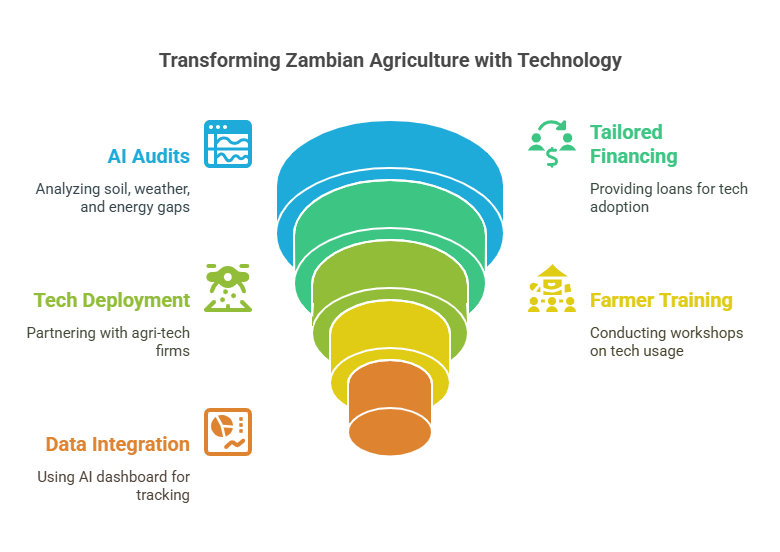
Why Tech Triples Rural Resilience
- AI Predictions: Forecast droughts 3 months in advance, enabling crop switches.
- Drones: Cover 100 acres/day vs. 10 acres manually.
- Wind Energy: 60% efficiency in Zambia’s high-wind valleys vs. 25% for standalone solar.
Linkbridge aims to equip 500 Zambian farms with AI/drone tech by 2025. Pilot expansions in Tanzania and Kenya target 80% yield boosts for 10,000 farmers.
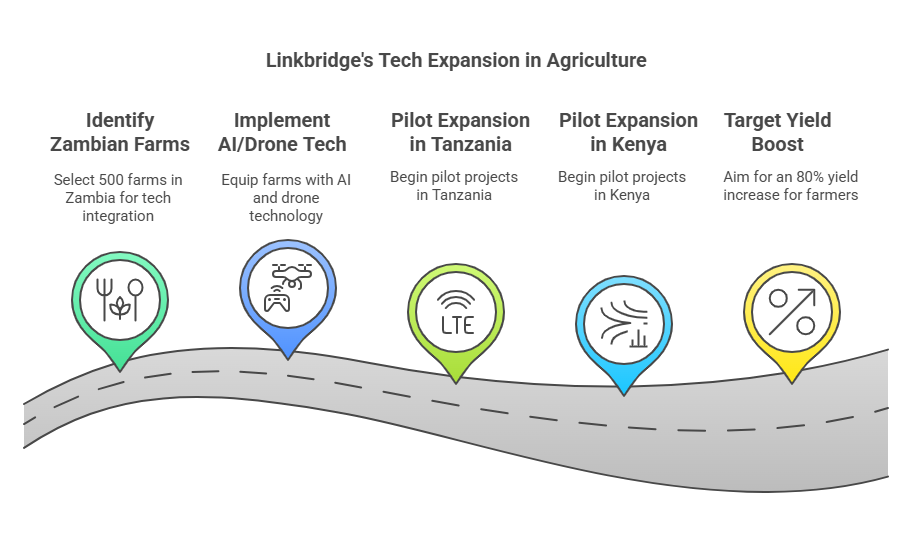
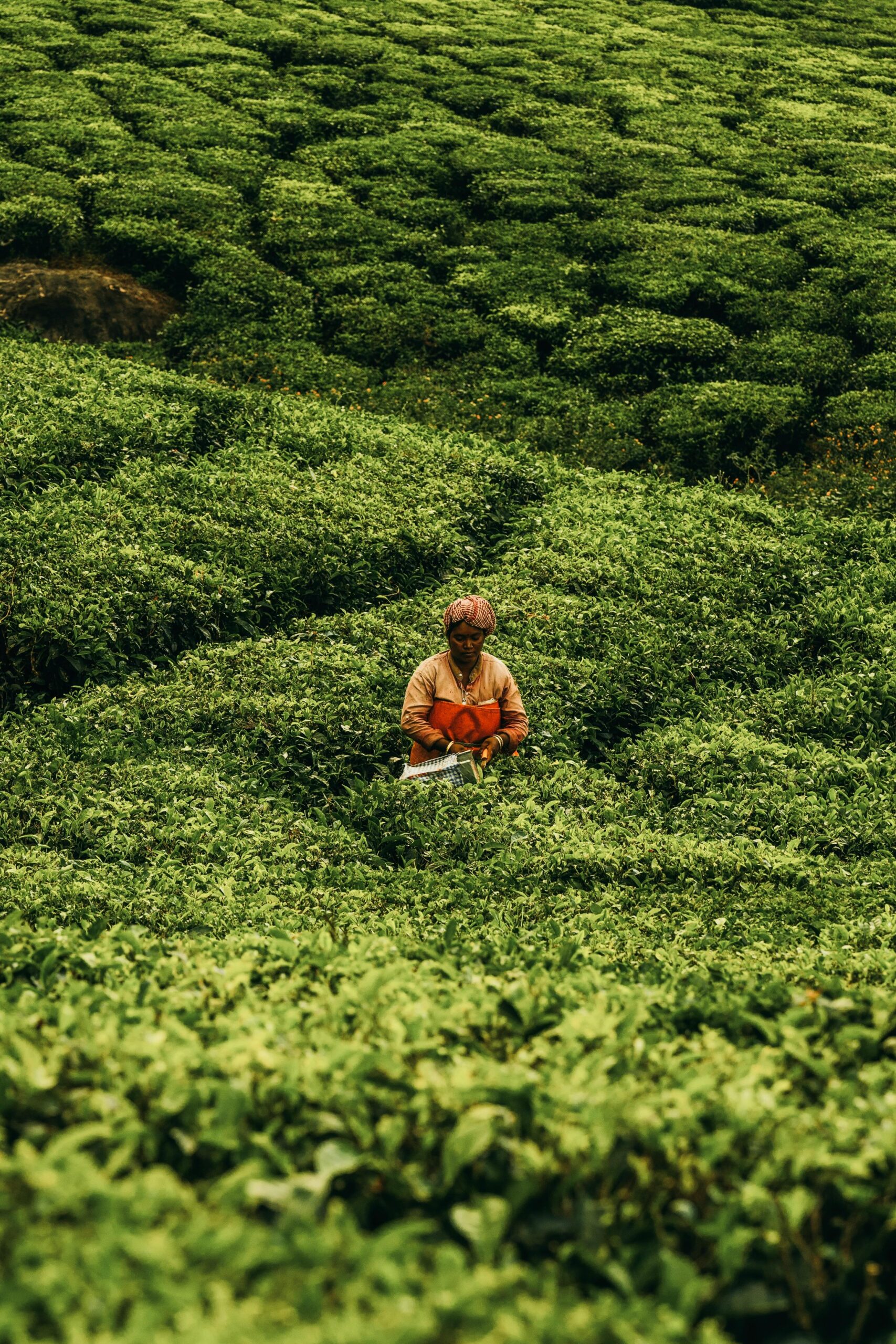
Revolutionizing Rural Sustainability with Linkbridge Financing.
This Case Study explores the transformative impact of Agri-Energy Cooperatives in Zambia, highlighting how Linkbridge financing is empowering farmers to overcome energy poverty, enhance productivity, and foster sustainable rural development. By examining the challenges faced by rural farmers and showcasing successful case studies, we illustrate the potential for scalable solutions that can be replicated across Africa.
The Challenge: Energy Poverty in Rural Zambia
Zambia’s rural farmers face crippling energy costs, with 60% relying on costly diesel pumps and experiencing erratic grid access. This situation stalls productivity and traps communities in a cycle of poverty, making it difficult for farmers to thrive and invest in their futures.

The Solution: Agri-Energy Cooperatives Powered by Linkbridge
Linkbridge partners with Zambian farmers to launch solar and biogas cooperatives, offering:
- ✅ Low-Interest Loans: For shared solar grids, biogas digesters, and irrigation technology.
- ✅ Technical Training: Local experts guide installation, maintenance, and energy sales.
- ✅ Community Partnerships: Linkbridge connects cooperatives with NGOs and Zambia’s Renewable Energy Agencies.
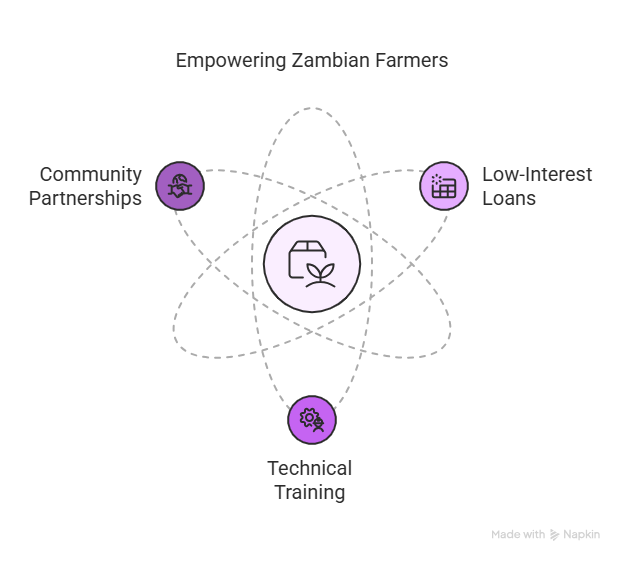
Case Study: The Chikanta Solar Cooperative
Location: Southern Zambia
Members: 32 smallholder farmers
Linkbridge Support: $120,000 loan + technical advisory
Before:
- Diesel pumps consumed 40% of profits.
- No electricity for processing/storage; post-harvest losses hit 30%.
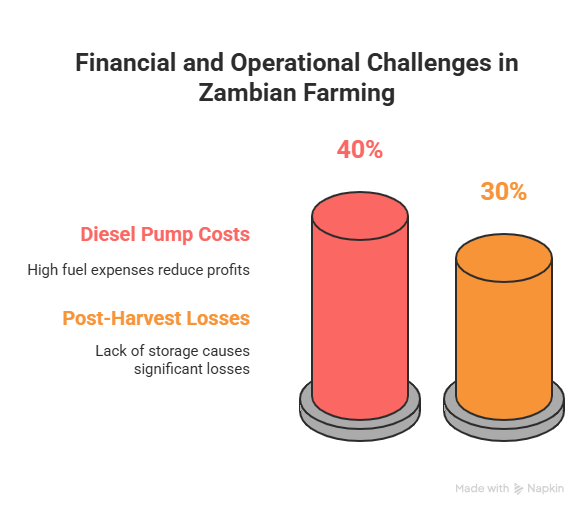
After:
- Solar-Powered Irrigation: Cut energy costs by 70%, freeing funds for seeds and equipment.
- Excess Energy Sales: Cooperative sells surplus solar power to 200 nearby households, earning $1,200/month.
- Biogas Add-Ons: Livestock waste converted to clean fuel, replacing firewood.
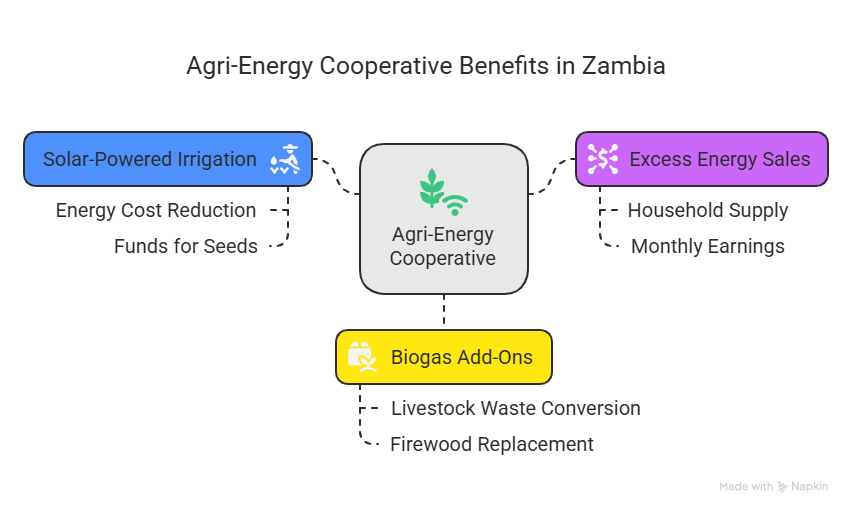
Impact in 18 Months:
- Income Increase: 55% average rise in member earnings.
- CO2 Reduction: 180 tons saved annually.
- Jobs Created: 15 new roles in maintenance and energy distribution.
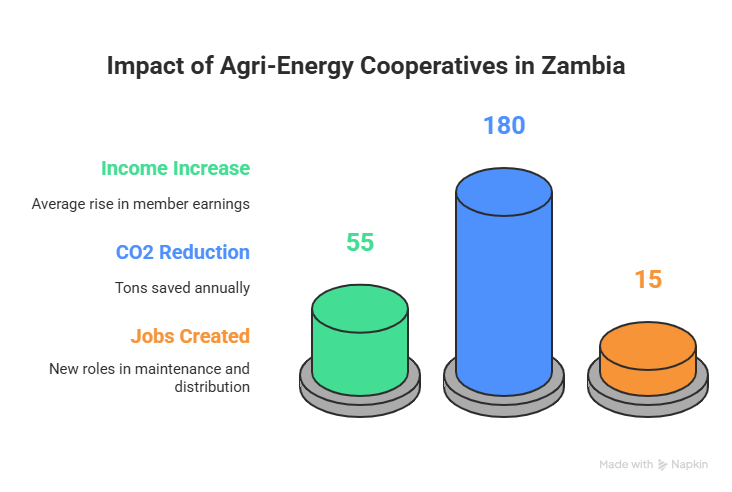
Why Agri-Energy Cooperatives Work in Zambia
- Scale Economies: Shared systems cut per-farmer costs by 60% compared to solo setups.
- Resilience: Decentralized energy buffers against droughts and grid failures.
- Inclusivity: Women-led cooperatives (like Chikanta’s) drive 80% of local energy decisions.
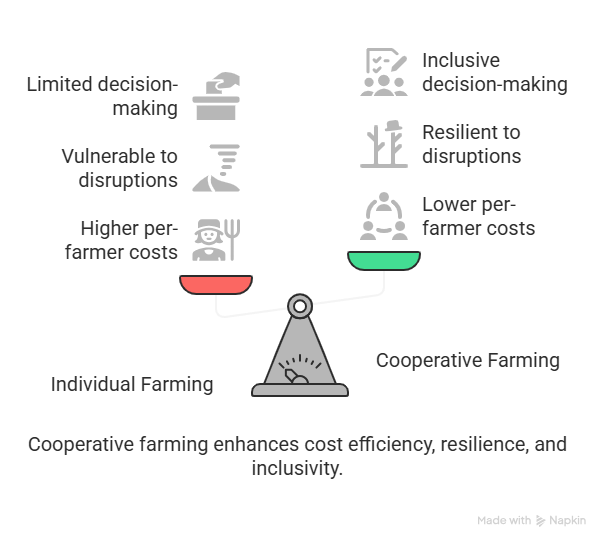
Linkbridge’s Role in Scaling Rural Sustainability
- Tailored Financing: Loans structured around harvest cycles (12–24-month repayments).
- Tech Partnerships: Subsidized access to high-efficiency solar pumps and AI-driven energy management tools.
- Policy Advocacy: Collaborating with Zambia’s government to streamline permits for farmer-led energy projects.

The Future: A Blueprint for Africa
Zambia’s Agri-Energy model, backed by Linkbridge, is replicable across Africa, where 600 million lack electricity. Upcoming projects in Malawi and Zimbabwe aim to electrify 50,000 farms by 2028, showcasing the potential for widespread rural empowerment and sustainability.
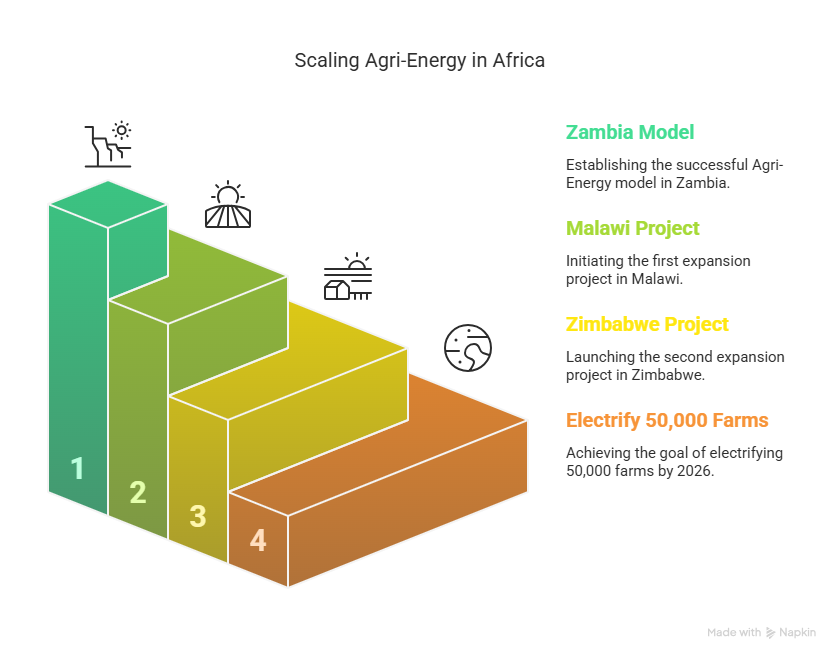
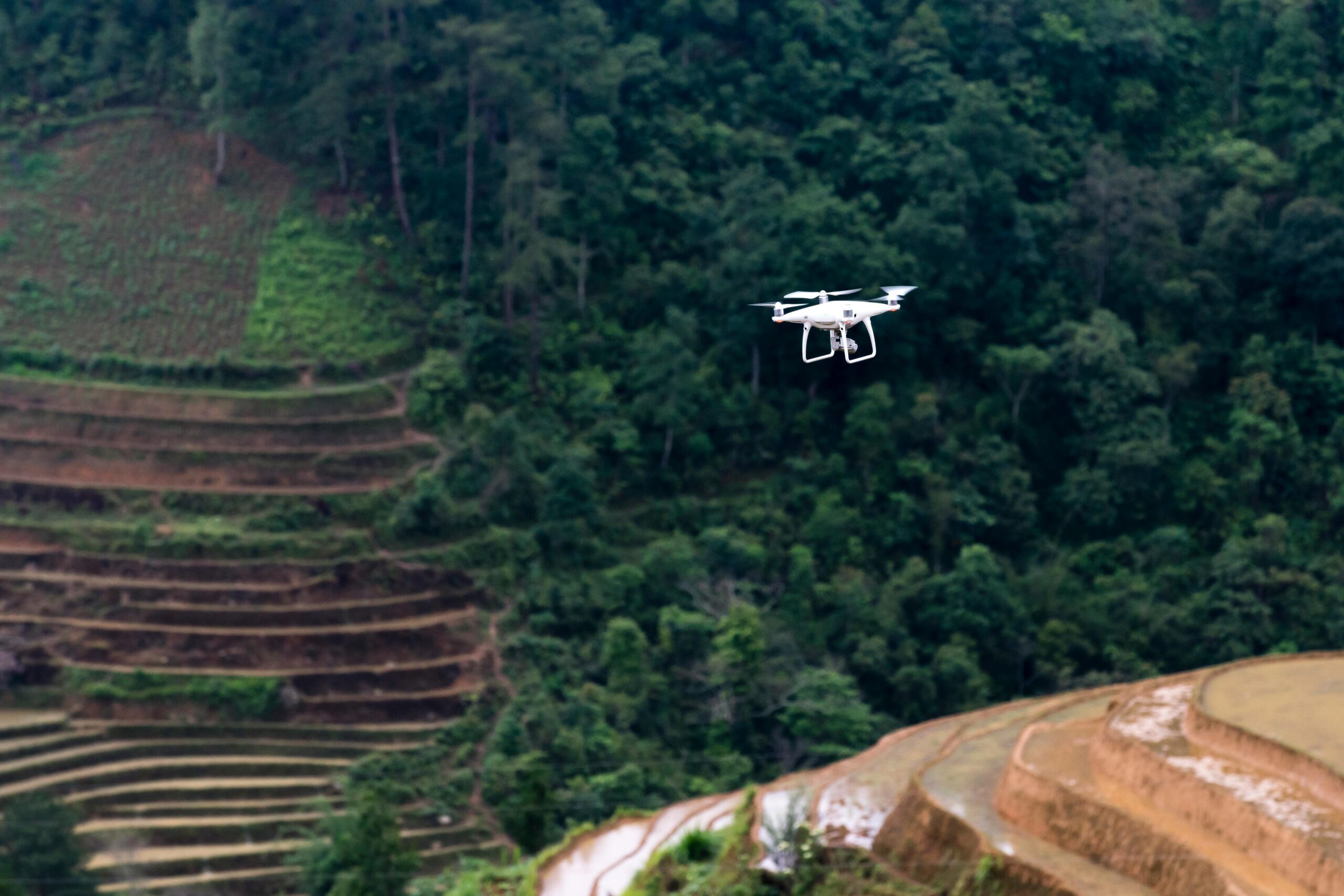
Smart Farms: Revolutionizing Agriculture with IoT Devices
Discover how Internet of Things (IoT) devices are transforming traditional farming into smart farms, boosting efficiency, productivity, and sustainability in agriculture. Explore the future of farming today.
Introduction
Imagine waking up to a world where farms communicate directly with farmers, where crops report their own needs, and where machines operate with precision to ensure the healthiest yield. Welcome to the era of smart farms, where the Internet of Things (IoT) is not just a buzzword but the backbone of modern agriculture. This blog post will explore how IoT devices are paving the way for a new age of farming, characterized by unprecedented efficiency and productivity. From soil sensors to autonomous tractors, let’s delve into how technology is making agriculture smarter.
The IoT Revolution in Agriculture
The Internet of Things, or IoT, refers to a network of physical devices that collect and share data through the internet. In the context of agriculture, these devices range from soil moisture sensors to drones, all working together to optimize farm operations. This technological revolution is empowering farmers to monitor and manage their fields in real-time, making informed decisions that lead to increased crop yields and reduced resource waste.
The Roots of Efficiency: Soil and Crop Monitoring
One of the keystones of smart farming is the ability to monitor soil and crop health accurately. IoT devices, such as soil moisture sensors and nutrient levels monitors, provide vital data directly to the farmer’s smartphone or computer. This means farmers can water their crops with precision, reducing water consumption, and ensure their crops receive the right amount of fertilizers, minimizing chemical runoff into local ecosystems. It’s a win-win for both productivity and sustainability.
Autonomous Architects: Drones and Robots
Drones and robots are taking on more roles on smart farms, from aerial surveys that map out the health of crops across vast areas to robots that can weed, plant, and harvest. These autonomous helpers work tirelessly, covering more ground than human workers could, and they do so with pinpoint accuracy. For example, drones equipped with multispectral imaging can detect plant stress before it’s visible to the human eye, allowing for early intervention and potentially saving entire crops from pestilence or disease.
Data-Driven Decisions: Analytics and Predictive Modeling
The heart of the smart farm is not just in its devices but in the data they collect and the insights they provide. Advanced analytics and predictive modeling turn raw data into actionable intelligence. Farmers can predict weather patterns, understand crop rotation benefits, and even forecast market demands. This foresightedness enables better planning and resource allocation, ensuring that farms are not only efficient but also resilient to the uncertainties of climate and market fluctuations.
The Connected Ecosystem: Integration and Automation
Perhaps the most revolutionary aspect of IoT in agriculture is the creation of a connected ecosystem where devices communicate not only with the farmer but also with each other. This integration allows for automation of complex processes. For instance, data from soil sensors can trigger irrigation systems when necessary, without human intervention, or inform robotic harvesters when crops are at their peak ripeness. This seamless orchestration of tasks reduces labor costs and enhances the timing and quality of agricultural activities.
In Conclusion: Cultivating the Future
The integration of IoT devices in agriculture is more than just an upgrade; it’s a complete overhaul of how food is grown. Smart farms signify a leap towards a future where efficiency, productivity, and sustainability are not mutually exclusive but are interwoven into the fabric of agriculture. As we look forward to feeding a growing global population, the importance of adopting such technologies cannot be overstated. The revolution is here, and it promises a healthier, more bountiful planet for generations to come.
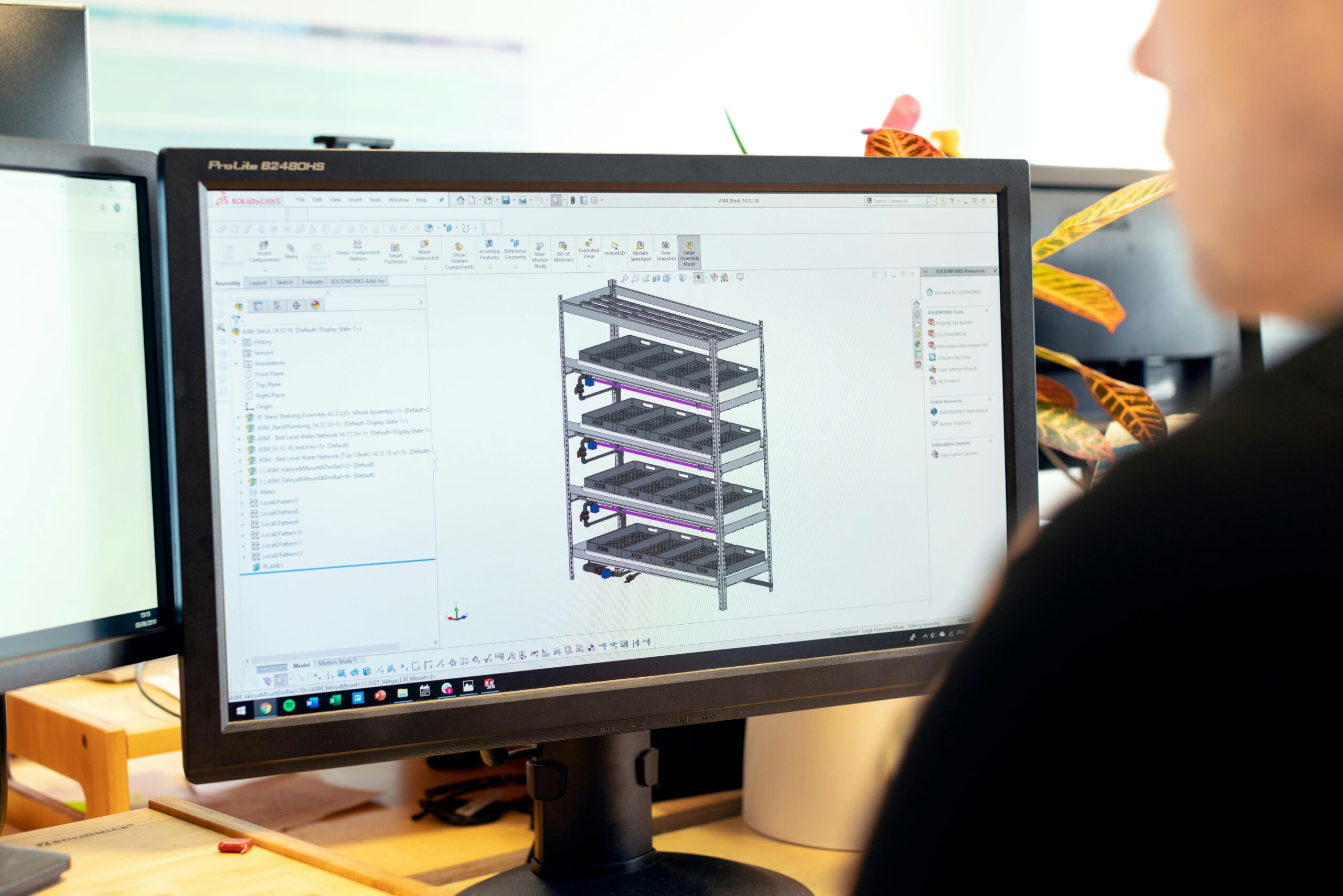
Harnessing AI: Revolutionizing Agriculture for the Future
Discover how Artificial Intelligence is revolutionizing the agricultural industry, enhancing crop yields, optimizing resources, and promising a sustainable future. Explore the role of AI in transforming farming practices for the better.
Introduction
Imagine stepping onto a farm of the future: it’s a place where decisions are grounded in gigabytes of data rather than gut feelings, and where human farmers collaborate with intelligent machines to ensure the prosperity of every crop. Welcome to the avant-garde of agriculture, where Artificial Intelligence (AI) is not just making guest appearances but has become a mainstay, reshaping the agricultural canvas in profoundly innovative ways. This blog post is your ticket to understanding how AI is poised to revolutionize farming, crafting a smarter, more efficient, and sustainable pathway to feed our growing global family. Let’s plow ahead and uncover the potential of AI in agriculture.
Seeding the Future: Precision Agriculture
The first sprout of change comes with precision agriculture, a practice that AI has taken to new heights. By analyzing data from satellite images, ground sensors, and weather reports, AI algorithms can make precise recommendations for planting, watering, and fertilizing crops. This tailored approach ensures that each plant receives exactly what it needs to thrive, significantly increasing crop yields while conserving water and reducing chemical usage. It’s like having a personal nutritionist and trainer for every crop, ensuring they reach their peak performance with minimal waste.
The Eyes in the Skies: Drone Technology
Drones, powered by AI, are becoming the eyes in the skies for farmers worldwide. Equipped with advanced imaging technology, drones can monitor crop health, soil conditions, and water levels across vast areas in real-time. This bird’s-eye view allows for quick identification of issues such as pest infestations or nutrient deficiencies, enabling targeted interventions that save time and resources. Drones can also map and analyze fields to assist in planning and tracking the progress of crops throughout the season, making the invisible visible and actionable.
The Robots Take the Reins: Automation and Robotics
Automation and robotics, driven by AI, are taking on labor-intensive tasks, from planting seeds to weeding to harvesting crops. These robotic farmhands work around the clock, optimizing productivity and allowing human farmers to focus on more strategic aspects of farm management. With machine learning, these robots are continuously improving, learning from each season to perform their tasks more efficiently. This not only helps address labor shortages but also reduces the physical toll farming takes on humans, heralding a new era of farm management that is both effective and humane.
A Predictive Harvest: Predictive Analytics
AI shines a predictive light on farming with its ability to analyze data and forecast future conditions. This includes predicting weather patterns, pest outbreaks, and crop diseases, which enables farmers to take preemptive action. By understanding what the future may hold, farmers can better plan their planting and harvesting schedules, choose the most suitable crops, and allocate resources more effectively. This foresight is akin to having a crystal ball, where informed decisions lead to reduced risk and increased yield.
Growing Together: AI-Enhanced Supply Chain Efficiency
Beyond the field, AI plays a crucial role in optimizing the agricultural supply chain. From predicting market demand to ensuring efficient distribution routes, AI helps in reducing waste and improving the freshness of produce reaching consumers. By analyzing consumption patterns and logistical data, AI systems can streamline operations, ensuring that the journey from farm to fork is as quick and cost-effective as possible.
In Conclusion: Cultivating a Future with AI
As we stand on the brink of this technological renaissance in agriculture, it’s clear that AI is not just an accessory but a necessity for the future of farming. By embracing AI, the agricultural sector can address some of its most pressing challenges, including feeding a growing population, conserving resources, and adapting to climate change. The future of agriculture with AI is not just about higher yields; it’s about creating a more sustainable, efficient, and resilient food system for generations to come.
The integration of AI into agriculture paints a hopeful picture of the future, where technology and tradition converge to cultivate a healthier planet. So, the next time you enjoy a meal, take a moment to appreciate the role of AI in bringing those ingredients to your table. The fields of tomorrow are ripe with potential, and AI is the key to unlocking a bounty of benefits for our world.
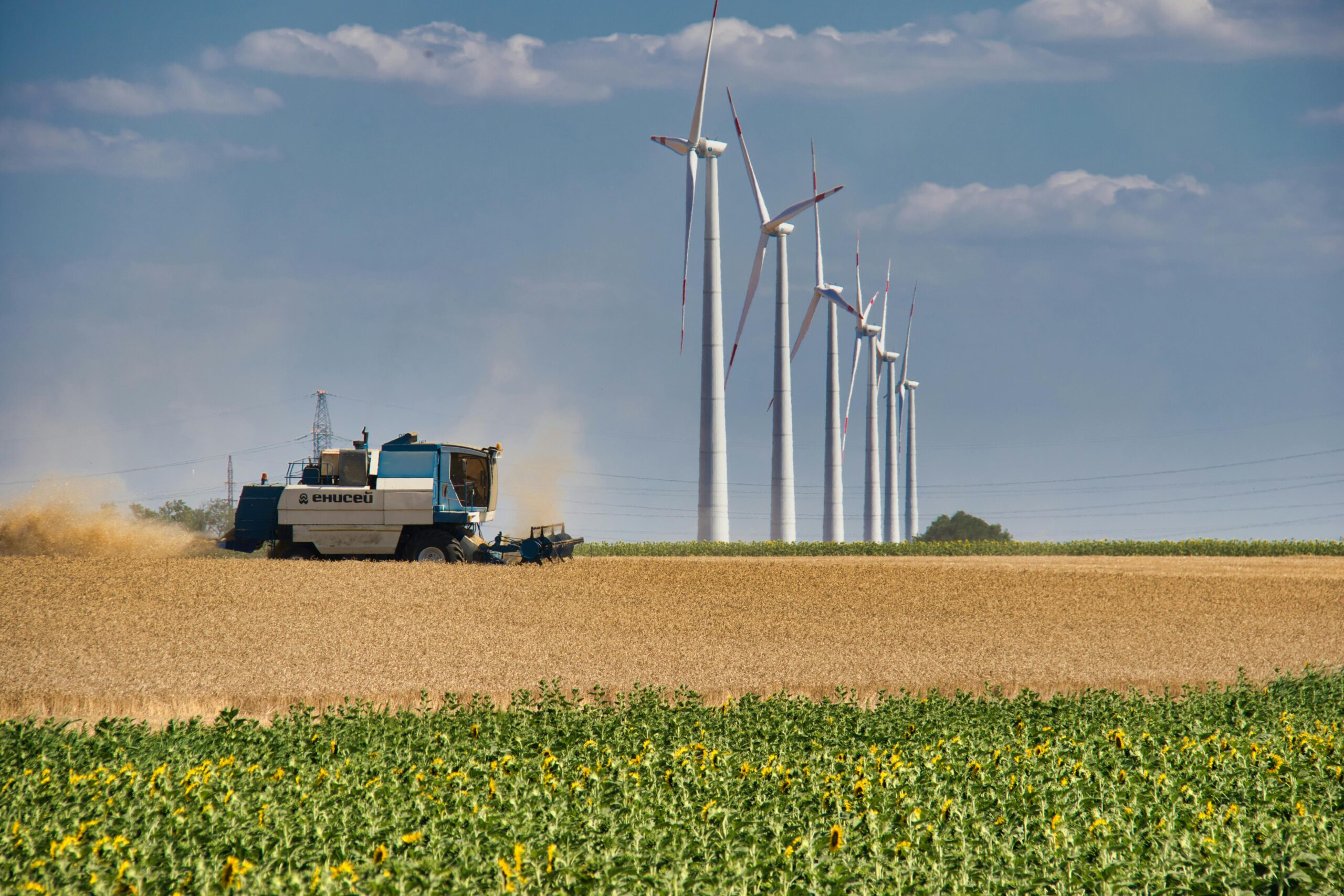
How Technology is Transforming Agriculture for a Sustainable Future
Explore the revolutionary impact of technology on agriculture, from precision farming to AI, and how these advances are paving the way for a more sustainable and productive future in farming.
Introduction
Ah, agriculture – the age-old practice of playing in the dirt, growing our food, and feeding nations. But hold on, it’s not all old school anymore! With the rapid advancements in technology, agriculture is undergoing a transformation that’s nothing short of a sci-fi novel. In this blog post, we’re going to explore the incredible ways technology is changing the face of farming, making it smarter, more efficient, and, believe it or not, kinder to our planet. So, buckle up, and let’s take a journey into the future of farming, where technology reigns supreme!
The Seeds of Change: Precision Agriculture
Gone are the days of guesswork and inefficiencies in farming. Precision agriculture is leading the charge, turning fields into finely tuned orchestras. This approach uses GPS, IoT devices, and data analytics to monitor and manage the land. Imagine drones flying overhead, mapping out the field, and identifying which areas need more water or nutrients. It’s like giving each plant its personal butler, ensuring they grow up healthy and strong. This not only boosts crop yields but also reduces waste and environmental impact. Talk about a win-win!
Water, Water, Everywhere: Smart Irrigation Systems
Water is the lifeblood of agriculture, but with changing climates and dwindling resources, managing it wisely is more crucial than ever. Enter smart irrigation systems. These tech-savvy setups use sensors and weather forecasts to water crops precisely when and where needed. It’s like having a weatherman and a gardener in one, ensuring that not a drop is wasted. This smart use of water helps farmers adapt to climate change, safeguarding our food supply for future generations.
The Robot Farmers: Automation and Robotics
Robots in agriculture? You betcha! The farmhands of the future are here, and they’re not afraid to get their circuits dirty. From autonomous tractors that plow and sow without a human in sight, to robotic arms that delicately pick fruit and vegetables without bruising them, these machines are changing the game. They help tackle labor shortages, reduce the heavy lifting, and keep the farms running like clockwork. And with advancements in AI, these robots are getting smarter, learning as they go, and making decisions on the fly. Farmers can now manage their operations more efficiently, giving them more time to plan for the future.
A Peek Under the Leaves: Blockchain for Traceability
Traceability is a big deal in the food industry. Consumers want to know where their food comes from, and blockchain technology is here to make that happen. By creating a transparent, unalterable record of the food’s journey from farm to table, blockchain boosts confidence in food safety and quality. It also helps farmers get fair prices for their products, as they can prove the authenticity and ethical standards of their goods. This digital ledger is not just a tool for transparency; it’s a bridge connecting farmers and consumers, fostering trust and understanding.
The Crystal Ball: Big Data and Predictive Analytics
Imagine having a crystal ball that could tell you exactly what to plant, when to plant it, and how to care for it to ensure the best possible harvest. That’s essentially what big data and predictive analytics offer. By analyzing vast amounts of data, farmers can predict weather patterns, disease outbreaks, and market trends, making informed decisions that increase efficiency and profitability. This technology turns farming into a precise science, where every decision is backed by data, reducing risks and ensuring the stability of food production.
In Conclusion: The Future is Bright (and Green!)
The integration of technology in agriculture is not just a trend; it’s a revolution that’s here to stay. As we look towards the future, it’s clear that these innovations are not merely making farming easier; they’re making it more sustainable, ensuring that we can feed our growing population without depleting our planet’s resources. The future of farming is bright, and it’s green, powered by technology that respects the earth and all its inhabitants.
So, the next time you enjoy a meal, take a moment to think about the incredible journey it’s been on, powered by technology, from seed to plate. The transformation of agriculture is an ongoing saga, one that promises a future where technology and nature work hand in hand for the greater good.
Remember, the future of agriculture isn’t just about growing food; it’s about growing hope. With technology as our ally, we’re sowing the seeds for a healthier, more sustainable world. So here’s to the farmers, the innovators, and the dreamers – together, we’re cultivating a future worth looking forward to.

